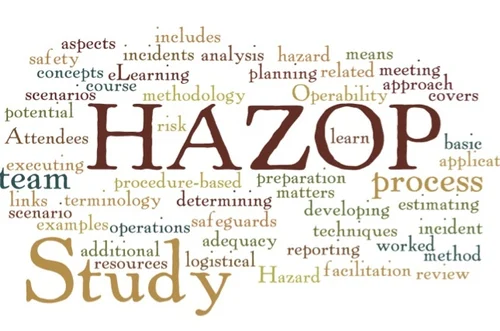HAZOP in 2025: How Advanced AI is Transforming Risk Assessments

What is HAZOP and Why is it Critical in Process Safety?
Hazard and Operability (HAZOP) studies play a crucial role in identifying risks and operational inefficiencies in industrial processes. It is a systematic technique used to analyze deviations in processes and ensure safety compliance. The HAZOP Study method is widely used in industries like oil and gas, chemicals, pharmaceuticals, and manufacturing, where safety is paramount.
Traditional HAZOP methods involve human experts manually assessing possible deviations in design and operations. However, with the integration of Artificial Intelligence (AI), the process is becoming more efficient, data-driven, and predictive.
How AI is Changing HAZOP Studies in 2025?
In 2025, AI has significantly impacted the way HAZOP is conducted by automating risk assessments, improving accuracy, and enhancing decision-making. Below are some of the key ways AI is transforming the HAZOP process:
1. AI-Powered Risk Identification and Predictive Analytics
Traditional HAZOP relies on human expertise to identify risks, but AI-driven models can now predict potential hazards with greater accuracy. AI systems use historical data, real-time sensor inputs, and predictive modeling to foresee possible failures before they occur.
2. Automated Data Analysis and Pattern Recognition
AI-based tools can process vast amounts of operational data in seconds. These systems detect patterns in equipment performance, deviations, and safety incidents, helping engineers make informed decisions.
3. Natural Language Processing (NLP) for Improved Documentation
AI-powered NLP models assist in analyzing and summarizing safety reports, reducing human error and ensuring comprehensive documentation. This streamlines the review process and enhances regulatory compliance.
4. Digital Twins and AI Integration
The use of digital twin technology—where AI creates a virtual replica of a plant or process—allows organizations to run simulations and predict potential failures before implementing changes.
5. AI-Assisted Decision-Making for Risk Mitigation
With machine learning algorithms, AI systems provide recommendations for risk mitigation based on past incidents, real-time data, and industry trends. This improves safety outcomes and reduces operational downtime.
The Role of AI in Process Safety Management
The integration of AI in Process Safety Management (PSM) enhances workplace safety by proactively identifying hazards. AI-driven process safety solutions can continuously monitor compliance, assess potential risks, and automate response strategies to prevent accidents.
Some of the ways AI is enhancing PSM include:
-
Real-time safety monitoring through IoT sensors
-
AI-based predictive maintenance for equipment
-
Automated compliance tracking and reporting
Fire Safety Advancements with AI-Powered Audits
AI is also revolutionizing Fire Audit techniques by automating fire risk assessments and response planning. AI-powered fire detection systems can analyze smoke, heat, and toxic gas emissions in real time, reducing the risk of fire incidents.
Key advancements in AI-driven fire audits include:
-
Smart fire suppression systems
-
AI-enhanced evacuation planning
-
Predictive analysis for fire hazard detection
The Future of AI in HAZOP: What to Expect Beyond 2025?
With continuous advancements in AI technology, future HAZOP studies will become even more precise and automated. Key trends to watch out for include:
-
AI-driven safety training simulations to enhance workforce preparedness
-
Blockchain integration for audit transparency in risk management
-
AI-powered real-time compliance tracking for regulatory adherence
How a Safety Consultant Can Help Navigate AI in HAZOP?
While AI enhances risk assessments, expert guidance from a Safety Consultant is crucial to ensure that AI tools are effectively integrated into safety protocols. A safety consultant provides expert evaluation, audits, and training to help organizations maximize AI-driven safety measures.
Conclusion
AI is transforming HAZOP studies in 2025 by making risk assessments smarter, faster, and more accurate. By leveraging AI-powered tools, industries can enhance safety, reduce operational risks, and achieve better compliance with safety regulations. However, human expertise remains essential in ensuring that AI is used effectively to optimize hazard identification and risk management.







